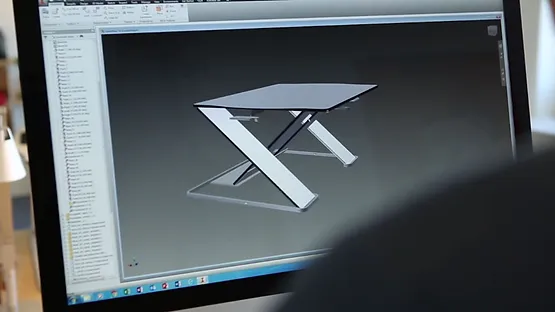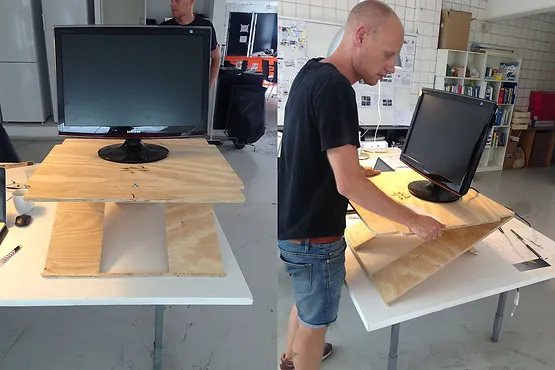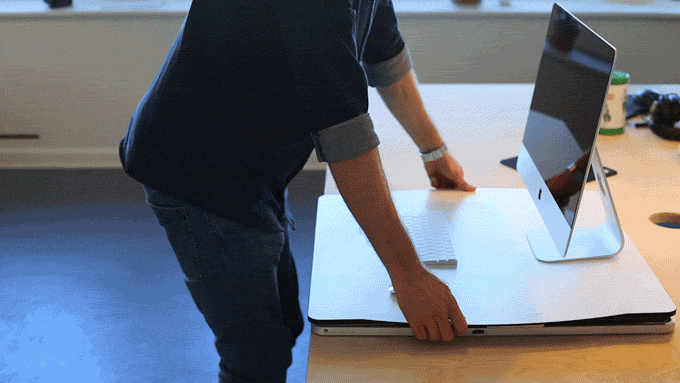“Atoms are a drag”, Jeff Jarvis states in his book “What would google do“ – essentially meaning that real world stuff sucks.
This might be true in the sense, that physical goods can’t be made as fast and in the same scale as digital giants like Google or Facebook took over the world. We hear it over and over: A new software-company makes a grand exit after a few years.
But we do live in a physical world, and a lot of its problems can’t be solved by software alone. And as a company who invents and makes physical object for a living, we can assure you that the development of atoms doesn’t have to be slow and inflexible.
OPLØFT – From idea to exit in less than a year
Last year we decided to spend some time in the more quiet part of the year to develop our own ideas and project. When we came back from summer holidays we emptied our idea box and picked a few to develop (we actually have a physical box in our office where we put our ideas – but that must be explained in another post).
One of the ideas from the box was the need for a more compact height-adjustable desk – mainly because we needed one for our own office. We wanted something that was super compact and discrete, and as we weren’t able to find anything that really satisfied our need anywhere, we decided to create our own solution.
We had a need and came op with the basic idea for the sliding plates in august, which was really the “wow”-moment: The sliding plates made the height-adjustable solution compact enough to store when needed, and it also allowed the minimalistic design we wanted ourselves.

The basic concept was two sliding plates, that is displaced in relation to each other, when the upper plate is lifted.
During August we refined the idea and design, and in October we had the first prototype ready. A rough one, but a prototype that let us test our concept.

Our first wooden prototype of OPLØFT – and me trying it out.
We made a few tweak, but overall we were pretty happy with the concept. For the final prototype we wanted a more “end product”-feel, and made it with some local manufacturers. It was done in December, and we’re still using it today.

Go-to-market with testing
With a solid prototype we started fiddling with a few different go-to-market strategies before settling on crowdfunding. We hadn’t crowdfunded any of our products before, but as it was a consumer product and we wanted to test the market it seemed like the obvious choice.
Even though the crowdfunding campaign was handled as a project within the project and took a few months to set up, it was a fast way to test and validate the market, create some visibility (in best case some fuzz about the product) – and of course we also hoped it would generate some preorders to get the remainder of the project funded.
We aimed for 60.000 dollars and got more than 66.000 dollars in funding, which made our market test a success to such a degree, that the British company Posturite contacted us during the campaign. In the last days of the campaign we signed a deal with this experienced manufacturer and distributor in the height-adjustable desk-business, who have bought the rights to commercialize the product, and who will support the final engineering of OPLØFT.
In other words: We took OPLØFT from an need on a piece of paper, through design, prototyping and market test and all the way to an exit within a year.
The tactile fascination
It might be true, that software is easier to prototype, modify and distribute than hardware. Once your product is out there, it’s hard to quickfix your mistakes with an update.
But rapid prototyping is indeed possible in the real world with the right techniques. To some degree the internet and digitization has made it even easier and faster – using crowdfunding we were able to get in touch with consumer from all over the world in just a few weeks, which made us confident in succeeding with the production of OPLØFT.
Of course we simply have a fascination with mechanics and the tactility in the products we make. But at the same time it’s hard to have the same impact on someones health and working environment, if you won’t include atoms. You’ll have a hard time creating a standing disk, installing windows or hauling bricks only using software.
